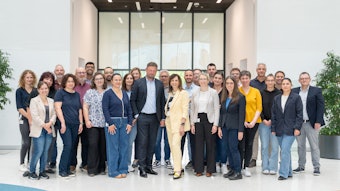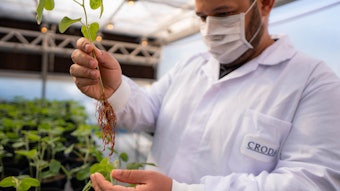“The struggle to save the global environment is in one way much more difficult than the struggle to vanquish Hitler, for this time the war is with ourselves. We are the enemy, just as we have only ourselves as allies.” —Al Gore
Once upon a time, the safety of personal care products and fragrances implied one of three things: the products’ effect on the skin, around the eyes or if ingested. A chemical in a shampoo was less likely to be an irritation problem because it was in a rinse-off product. Now, however, there exists a heightened awareness that the shampoo goes down the drain, and, therefore, new issues in safety include environmental considerations. For a formulating chemist, an understanding of the environmental fate of chemicals is a key to designing products for a better world.
Though computer models have limitations and shortcomings, they are a useful tool for evaluating chemicals without expensive and tedious laboratory work, and, despite limitations, are too valuable to be dismissed. I will look at two programs linked through the U.S. Environmental Protection Agency (EPA) Web site (www.epa.gov): the PRT profiler and EPI Suite.
The Programs
The surfactants in a shampoo, for example, cannot be analyzed by computer modeling because they are water-soluble mixtures, a dual property that disrupts the algorithm. Likewise, any botanicals or natural products cannot be checked. For illustrative purposes, we will examine propylene glycol, a single chemical of simple structure present in numerous personal care products.
The PBT (persistence, bioaccumulation and toxicity) profiler site begins with pages of disclaimers. It is, after all, a model, and does not produce rock solid data. Very conservative correction factors are applied, as is customary to many regulatory results. PBT is calculated online when a Chemical Abstract Service (CAS) number is entered. Every chemical has at least one CAS number—and often multiple numbers since there is considerable duplication. The CAS number of propylene glycol is 57-55-6.
The persistence in water, soil, sediment and air as the half-life in days is shown. The results are color-coded like a traffic light: green is good, orange is a little bad and red is very bad. With propylene glycol the sediment half-life is bad, but 0% of the propylene glycol is in the sediment, so it really doesn’t matter. The bioaccumulation number and fish toxicity are green, which is good. The overall safety profile is excellent. To be a PBT—which, from an environmental perspective, is a really bad chemical—P, B, and T must all be red.
The PBT profiler is easy indeed when compared to EPI Suite (EPI = Estimation Programs Interface). The components of EPI Suite are tabulated in Table 1. Input can be either chemical name or SMILES (Simplified Molecular Input Lines Entry System) notation, a standard method of entering a chemical structure into a computer using a standard keyboard.1 A few basic rules and notations are shown in Table 2. Propylene glycol has a simple structure, with SMILES notation OCC(O)C.
Popping the SMILES notation into EPI Suite and hitting “calculate” yields copious physical data. An important result for environmental effects comes from the Level III Fugacity Model.
Fugacity is a measure of the partitioning of a chemical into the environment. Imagine spraying a few grams of a chemical next to a pond in a park with a gravel shoreline. The material will have different affinities and lifetimes for water, gravel, air and soil. The fugacity calculation shows that almost 98% of propylene glycol will end up in the water and soil, with negligible presence in air and sediment.
Combining fugacity with other data offers an informed guess—and a guess is all it really is—of the environmental consequences of a material. If a chemical is toxic to fish but has almost no partitioning into water, the toxicity becomes irrelevant. A trained regulatory person is essential to intelligently interpret the mass of data available in data bases and modeling programs.
The most widely recognized aspect of environmental fate is biodegradability, and a widely recognized set of biodegradation standards comes from the Organisation for Economic Co-operation and Development (OECD). Biodegradation results are not appropriate for complex mixtures, so each component must be evaluated separately.
Ready biodegradability is defined by EPA2 as “an expression used to describe those substances which, in certain biodegradation test procedures, produce positive results that are unequivocal and which lead to the reasonable assumption that the substance will undergo rapid and ultimate biodegradation in aerobic aquatic environments.” Inherent biodegradability requires 60–70% biodegradation with OECD 302, with the test determined by the properties of the target material such as solubility or volatility.
Boethling3 has proposed methods for designing biodegradability into molecules.
An example of a historic triumph from our industry was the development of linear alkylbenzene sulfonate (LAS). In the 1940s, soap was replaced by alkylbenzene sulfonate surfactants (ABS). Problems were soon noted because of limited biodegradation and foaming problems in treatment plants. The underlying problem was identified as extensive branching in the alkyl chains. Molecular sieves were used to separate linear alkanes from petroleum, and the LAS, with greater than 98% biodegradability, became the standard detergent by the early 1960s.
The first rule of green chemistry is to make safe products at the beginning of development. Some basic generalizations for designing biodegradable chemicals are to incorporate ester linkages and hydroxyl groups and to avoid halogens, quaternary carbons and nitro groups. Boethling also explains the possibilities of using various computer models.
Environmental concerns, green chemistry, computer models, regulations and consumer expectations generate a challenging area for the modern chemist. We are forced to look at chemicals in complex systems using tools that are often only intelligent guesses. Future generations will be the judge of how well we handle the transformation to a greener world through chemistry and our technical imagination.
References
- D Weininger, “SMILES, a Chemical Language for Information Systems, Introduction to Methodology and Encoding Rules”, J Chem Inf Comput Sci, 28, 31–36 (1988)
- iaspub.epa.gov/trs/trs_proc_qry.navigate_term?p_term_id=1073046&p_term_cd=TERMDIS (last visited Aug 15, 2007)
- RS Boethling, et al, “Designing Small Molecules for Biodegradability,” Chem Rev, 107, 2207–2227 (2007)










